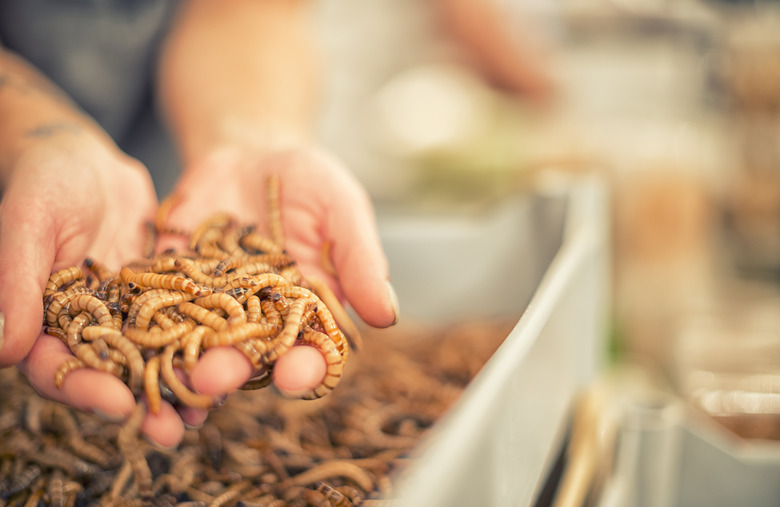Facts On Mealworms For Kids
It's common to present mealworms to children during elementary school as a way to teach ecology and ease them into life cycle lessons. They're inexpensive and easy to come by, which makes them an ideal classroom "pet" while mealworm lessons are ongoing. Keep science terms to a minimum and introduce mealworms with simple, easy to understand facts.
What Are Mealworms?
What Are Mealworms?
Mealworms are actually "baby" versions of the adult black beetle. There are more types of beetles than variety of anything else on earth, over 350,000 kinds. The mealworm is also considered the "larva" of the beetle. It is dark yellow with brown bands (or "stripes") down its body. It has two tiny antennae and six tiny legs near the front of its body. It has a hard body for burrowing called an "exoskeleton." The mealworm sheds its outer layer between nine and 20 times as it grows into an adult beetle.
Life Cycle
Life Cycle
The mealworm has four stages of growth. First, it's laid as a tiny white egg and then develops into a mealworm, its larva stage. Next comes the pupa, a state of sleep that can last weeks as it starts to look like an adult beetle. It hatches from its pupa, at first white, then brown, then black, living only for a few months as an adult. The entire life-cycle of the beetle lasts between one and two years, usually. A beetle can stay in its larva state for up to one year.
What Do Mealworms Eat and Where do They Live?
What Do Mealworms Eat and Where do They Live?
Mealworms can be a pest to humans. They enjoy cool, dark places and can be found in cabinets, barns, cellars and basements or wherever stored grain (such as cornmeal) can be found. They get water from eating fruits and vegetables that contain water. They also like to eat decaying matter, whether that is a dead animal or dead plants. They won't feast on anything that is living.
Do Mealworms Have Enemies?
Do Mealworms Have Enemies?
Mealworms are eaten by many other animals, including some humans. In some cultures, mealworms are fried in a pan and eaten whole, as a snack. They are actually very nutritious and contain a lot of protein and no fat. Animals that eat mealworms are birds, rodents, spiders, lizards and even a few other beetles.
Cite This Article
MLA
Swanson, Marisa. "Facts On Mealworms For Kids" sciencing.com, https://www.sciencing.com/mealworms-kids-8337774/. 22 November 2019.
APA
Swanson, Marisa. (2019, November 22). Facts On Mealworms For Kids. sciencing.com. Retrieved from https://www.sciencing.com/mealworms-kids-8337774/
Chicago
Swanson, Marisa. Facts On Mealworms For Kids last modified March 24, 2022. https://www.sciencing.com/mealworms-kids-8337774/
